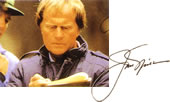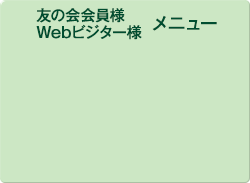
上記の昭和4~11年の欄の諸価格は、
下村海南という東京帝大卒業後、逓信省に入省し、
最終的に日本放送協会会長を務めた方の著書からです。
東京近郊のゴルフ場を元に記載がされています。
物価は品目によって変動幅が異なりますので、
このような比較はあまり意味のないこと
かもしれませんが、それでも、見る人によっては
興味を感じて頂けるかもしれません。
私にとっては、「入会金の下限・上限」が
ちょっと面白く感じました。
バブル期をピークに
会員権価格が恐ろしいほど上昇し、
暴落を始めた瞬間、
ジェットコースターのように下がっていった
その名残が示されているように感じます。
バブルのおかげで、安い所は本当に安くなり、
高い所はお金だけでは買えないというほど高いままだと。
また、キャディフィーが昔は安かったのですが、
当時はそのぐらい人件費が安かったんだろう
ということもありますし、
当時は子供がキャディを務めたという背景もあります。
また、昔は年会費がべらぼうに高く、
その分、メンバーのラウンドフィーが安かった
というのも面白いです。
両方を合わせると現在とさほど変わらないのですが、
当時はメンバーシップ制という面が色濃く、
コースはプレー代ではなく会費で稼ぐ
という構図だったのでしょう。
この本には
「アメリカの倶楽部は日々のラウンド時に料金を請求せず
年末に経費をまとめて頭割りでメンバーに請求する」
とあります。
「そんなんじゃ、よく来る奴が得をして、
あんまり来ん奴は損じゃねえか!」
というようなやり取りが日本ではあったのかとも思え、
そういう部分でも面白いです。
注 今回の「平成29年換算」は国家公務員の大学初任給の
比率を元に各数値を出しています。
末尾の鉄道料金を元に各数値を出すと
当時のゴルフ料金が非常に安価なものとなります。
従って、この比較はあくまでも目安に過ぎません。
当時の国家公務員の大学初任給は今よりも
相対的に高額だったのではないかという気もしますし。
それでも、面白いなあと思ってしまったんですけど。
2017.10.25
Golf-related prices in the early Showa period (about 1930s)

The prices in the above column for 1929-1936 are taken from a book written by Shimomura Kainan,
who graduated from Tokyo Imperial University, joined the Ministry of Communications, and eventually served as president of the Japan Broadcasting Corporation.
The materials were created based on golf courses near Tokyo.
Prices fluctuate differently depending on the item, so this kind of comparison may not be very meaningful, but some readers may find it interesting.
For me, the “minimum and maximum Club Entrance Fee(¥200~¥1,500)” was a bit interesting.
It feels like this is showing remnants of the time when membership prices peaked during the bubble period, rising to alarming levels,
and then suddenly dropping like a roller coaster the moment they began to crash.
Thanks to the bubble, the cheaper memberships have become really cheap,
while the more expensive ones remain so expensive that money alone cannot buy them.
Also, caddy fees(¥0.6) used to be cheaper, which is probably because labor costs were so low back then, and it is also because children often served as caddies at the time.
It’s also interesting to note that in the past the annual membership fee(¥60) was extremely high, but in return, members’ round fees(¥0.5) were low.
The combination of both is not much different from today, but back then the membership system was more prominent and the course probably made its money from annual fees rather than from playing fees.
This book says,
“American clubs don’t charge fees for daily rounds, but instead tally up expenses at the end of the year and bill members equally.”
“That way, people who come often will benefit, and people who don’t come often will lose out!”
It makes me think that exchanges like this may have taken place in Japan, so that’s also interesting.
Note: The figures in this “2017 conversion” are based on the starting salaries of national civil servants graduating from university.
If I calculate the figures based on the train fares at the end, golf fares at that time would have been extremely cheap.
Therefore, this data is only a guide.
I think the starting salary for university graduates at that time was probably relatively higher than it is now.
Still, I thought it was interesting.
2017.10.25

昭和初期のゴルフ関連物価 Golf-related prices in the early Showa period (about 1930s)






